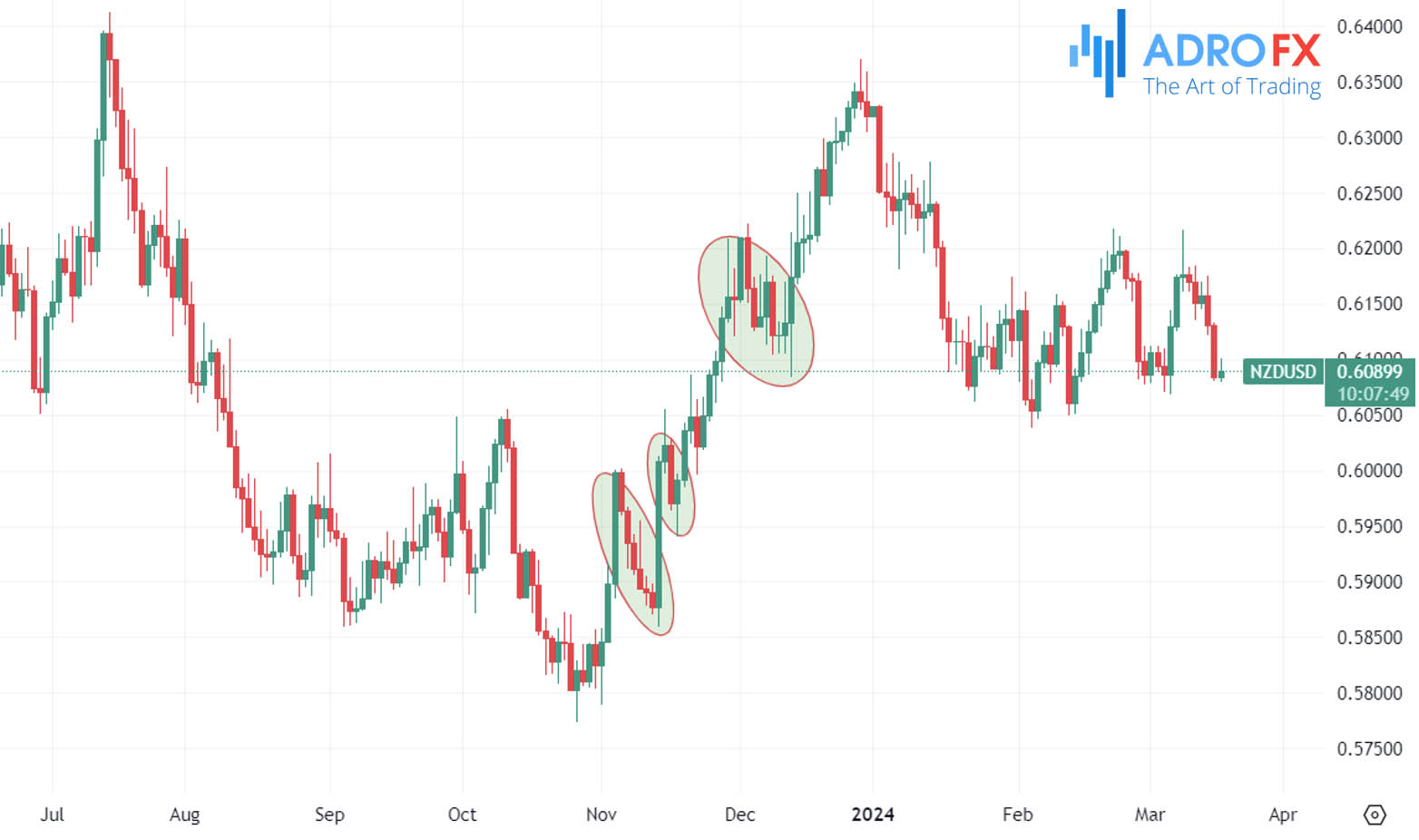Riding the Wave: Effective Strategies for Trading Market Pullbacks

In the ever-evolving landscape of financial markets, understanding the intricacies of market pullbacks is paramount for traders and investors alike. A market pullback, characterized by a temporary reversal or retracement in asset prices against the prevailing trend, represents a significant phenomenon shaping trading decisions and investment strategies. In this article, we delve into the nuanced world of market pullbacks, exploring their types, causes, identification methods, and effectual trading strategies. By understanding the mechanics of market pullbacks, traders can navigate market fluctuations with confidence and seize lucrative opportunities while managing risk effectively.
What Is a Market Pullback?
A market pullback refers to a temporary reversal or retracement in the price of a financial asset, such as a currency pair, stock, commodity, or index, against its prevailing trend. During a pullback, the price of the asset moves counter to the predominant trend, either correcting after a recent rally (in an uptrend) or bouncing higher after a decline (in a downtrend).

Market pullbacks are often considered healthy and normal within the context of a broader trend, as they bear opportunities for traders to place orders at more favorable prices or for investors to add to existing positions. Pullbacks allow the market to digest recent gains or losses and alleviate overbought or oversold conditions before potentially resuming the prevailing trend. Traders and investors employ different technical indicators, such as moving averages, RSI, or Fibonacci retracements, to locate possible pullback levels where buying or selling pressure may emerge. Additionally, fundamental analysis can help assess whether a pullback is driven by temporary market sentiment or underlying changes in economic or financial conditions.
Types of Market Pullbacks
There are several types of market pullbacks, each characterized by its duration, magnitude, and underlying causes. Here are some common types:
- Normal Pullback
This type of pullback occurs within the context of a healthy market trend. Prices temporarily retreat from recent highs (in an uptrend) or lows (in a downtrend) before resuming their prior direction. Normal pullbacks are typically moderate in magnitude and are considered a natural part of market dynamics. - Shallow Pullback
Shallow pullbacks are characterized by a relatively minor retracement in price compared to the preceding trend. These pullbacks may not break meaningful support or resistance levels and are often short-lived. Shallow pullbacks may indicate strong underlying buying or selling pressure in the market. - Deep Pullback
Deep pullbacks involve a more substantial retracement in price compared to the preceding trend. Prices may retreat significantly, potentially reaching or breaching key support or resistance levels. Deep pullbacks may be triggered by heightened volatility, economic data releases, meaningful geopolitical events, or shifts in investor sentiment. - Volatile Pullback
Volatile pullbacks are characterized by sharp and erratic price movements, often alongside increased trading volume. These pullbacks can occur suddenly and unpredictably, leading to rapid changes in market sentiment. Volatile pullbacks may be fueled by unexpected news events, market rumors, or sudden shifts in investor sentiment. - Correction
A correction is a more prolonged and substantial pullback that occurs after an extended period of market appreciation (bull market) or depreciation (bear market). Corrections typically result in price declines of 10% or more from recent highs, signaling a temporary reversal in market sentiment. Corrections can last for weeks or months and may represent buying opportunities for long-term investors. - Reversal
A reversal occurs when a pullback leads to a change in the prevailing market trend. For example, an uptrend may reverse into a downtrend following a significant pullback that breaches key support levels. Reversals can signal a shift in market dynamics and investor sentiment, potentially leading to a sustained trend in the opposite direction.
Grasping the idea of the various types of market pullbacks can help traders and investors interpret price action, assess market sentiment, and fine-tune their trading or investment strategies accordingly.

Causes of Market Pullbacks
Market pullbacks can occur due to a range of factors, spanning from economic indicators to geopolitical tensions to shifts in investor sentiment. These events can prompt a temporary reversal in market direction. Here's a look at the different causes of market pullbacks:
- Economic Data Releases
Data like GDP growth, employment reports, and inflation figures, along with central bank announcements, can sway investor sentiment and trigger pullbacks. - Corporate Earnings Reports
Quarterly earnings releases can greatly influence stock prices. Poor earnings results or downward revisions to future guidance may lead to investor sell-offs, causing market pullbacks. - Geopolitical Events
Geopolitical tensions, conflicts, and uncertainties can weigh on market sentiment. Events such as trade disputes, geopolitical conflicts, or political instability in key regions can increase market volatility. - Monetary Policy Decisions
Central bank actions, such as changes in interest rates or monetary policy statements, can influence market sentiment. Shifts towards tighter or looser monetary policy can impact currency values, bond yields, and equity markets. - Market Sentiment Shifts
Changes in investor sentiment, driven by fear, optimism, or pessimism, can prompt market pullbacks. Negative news headlines, rumors, or speculative trading activity may lead to profit-taking or risk-off behavior among investors. - Technical Factors
Technical indicators, chart patterns, and support/resistance levels can influence market behavior. Overbought or oversold conditions, trend reversals, or breakdowns in technical patterns may prompt traders to adjust their positions, causing short-term price retracements. - Global Events and Natural Disasters
Unforeseen global events, such as natural disasters or health crises, can disrupt financial markets. Events like earthquakes, hurricanes, or pandemics can impact supply chains, corporate earnings, and consumer confidence, leading to market volatility.
Understanding these various causes of market pullbacks can help traders and investors anticipate potential risks, manage their portfolios effectively, and capitalize on trading opportunities in dynamic market environments.
How to Find a Pullback
Identifying a pullback in the market involves analyzing price movements and market dynamics to determine whether the recent price decline represents a temporary reversal within an ongoing trend. Here are several ways to find a pullback:
- Trend Analysis
Start by identifying the prevailing trend in the market. A pullback typically occurs within the context of an established trend, whether it's an uptrend or a downtrend. Look for higher highs and higher lows in an uptrend, or lower highs and lower lows in a downtrend. - Price Patterns
Watch for specific price patterns that indicate a potential pullback. Common patterns include flags, pennants, triangles, and channels. These patterns often precede or accompany pullbacks within a trend. - Support and Resistance Levels
Identify key support and resistance levels on the price chart. A pullback may occur when the price retraces to test a previously broken resistance level, which now acts as support (in an uptrend), or when it retraces to test a former support level, now acting as resistance (in a downtrend). - Moving Averages
Use moving averages to gauge the strength and direction of the trend. During a pullback in an uptrend, the price may temporarily dip below a shorter-term moving average (e.g., 20-period or 50-period) while remaining above a longer-term moving average (e.g., 100-period or 200-period). In a downtrend, the opposite may occur. - Volume Analysis
Pay attention to trading volume during the pullback. A drop in volume during the pullback phase compared to the volume during the trend's initial movement may suggest a temporary pause rather than a reversal of the trend. - Relative Strength
Compare the strength of the pullback relative to the preceding trend. A shallow pullback with limited price retracement and relatively low volatility may suggest a healthy continuation of the trend. Conversely, a deep pullback with significant price retracement and high volatility may signal a potential trend reversal. - Price Momentum Oscillators
Use momentum oscillators such as the Relative Strength Index (RSI) or the Stochastic Oscillator to assess whether the market is overbought or oversold during the pullback. Oversold conditions in an uptrend or overbought conditions in a downtrend may suggest that the pullback is nearing its end. - Fundamental Analysis
Consider fundamental factors that may influence the market's direction and contribute to the pullback. Economic indicators, earnings reports, geopolitical events, or central bank announcements can impact investor sentiment and trigger temporary price retracements.
By combining technical analysis tools, trend identification, and an understanding of market fundamentals, traders can effectively identify potential pullbacks and distinguish them from broader trend reversals, allowing them to make more informed trading decisions.

Pullback Trading Strategies
Pullback trading strategies involve capitalizing on temporary price retracements within the context of an established trend. Here are several pullback trading strategies that traders commonly employ:
Trendline Bounce
Identify a trendline that connects consecutive higher lows in an uptrend or lower highs in a downtrend. When the price retraces to touch or slightly break the trendline during a pullback, consider entering a trade in the direction of the prevailing trend, anticipating a bounce from the trendline support or resistance.
Moving Average Pullback
Use moving averages to gauge the strength of the trend and identify potential pullback opportunities. Look for instances where the price retraces to test a shorter-term moving average (e.g., 20-period or 50-period) in an uptrend or a longer-term moving average (e.g., 100-period or 200-period) in a downtrend. Enter trades when the price bounces off the moving average support or resistance.
Fibonacci Retracement Levels
Apply Fibonacci retracement levels to identify potential pullback zones within the context of a trend. After identifying a significant swing high and swing low, draw Fibonacci retracement levels (e.g., 38.2%, 50%, 61.8%) to anticipate areas where the price may temporarily retrace before resuming the trend. Look for confluence with other technical indicators or price patterns to confirm the validity of the retracement.
Support and Resistance Zones
Utilize horizontal support and resistance levels to identify potential pullback zones. When the price retraces to test a previous resistance level (now acting as support) in an uptrend or a former support level (now acting as resistance) in a downtrend, consider entering trades in the direction of the prevailing trend, anticipating a bounce or breakout from these key levels.
Breakout Pullback
Wait for a breakout from a consolidation pattern, such as a flag, pennant, or triangle, followed by a pullback to retest the breakout level. Enter trades on the pullback, ideally after confirming that the breakout level holds as support or resistance. This strategy allows traders to capitalize on the continuation of the trend following a brief consolidation phase.
Price Action Patterns
Identify specific price action patterns that signal potential pullback opportunities, such as bullish engulfing patterns, hammer candles, or bullish pin bars in an uptrend, and bearish engulfing patterns, shooting star candles, or bearish pin bars in a downtrend. Enter trades based on the confirmation of these reversal candlestick patterns, combined with other technical indicators or confluence factors.
Volume Confirmation
Use volume analysis to confirm the validity of pullback opportunities. Look for decreasing volume during the pullback phase and increasing volume during the resumption of the trend, indicating that market participants are re-entering the market in the direction of the prevailing trend.
Trend Confirmation Indicators
Utilize trend confirmation indicators, such as the Moving Average Convergence Divergence (MACD) or the Average Directional Index (ADX), to confirm the strength and direction of the trend before entering pullback trades. Look for alignment between these indicators and the pullback setup to increase the probability of a successful trade.
By implementing these pullback trading strategies and adapting them to different market conditions and timeframes, traders can effectively capitalize on temporary retracements within the context of established trends, maximizing their trading opportunities while managing risk.
Conclusion
Market pullbacks stand as a testament to the dynamic nature of financial markets, offering both challenges and opportunities for traders and investors. From understanding the different types of pullbacks to dissecting their underlying causes and employing effective trading strategies, mastering the art of pullback trading is essential for success in today's volatile markets. By leveraging technical analysis tools, trend identification techniques, and a keen understanding of market fundamentals, traders can capitalize on temporary retracements within established trends, enhancing their trading prowess and achieving their financial objectives. Embracing the complexities of market pullbacks empowers traders to navigate market volatility with resilience and adaptability, ultimately paving the way for long-term trading success in an ever-changing financial landscape.
About AdroFx
Established in 2018, AdroFx is known for its high technology and its ability to deliver high-quality brokerage services in more than 200 countries around the world. AdroFx makes every effort to keep its customers satisfied and to meet all the trading needs of any trader. With the five types of trading accounts, we have all it takes to fit any traders` needs and styles. The company provides access to 115+ trading instruments, including currencies, metals, stocks, and cryptocurrencies, which make it possible to make the most out of trading on the financial markets. Considering all the above, AdroFx is the perfect variant for anyone who doesn't settle for less than the best.










